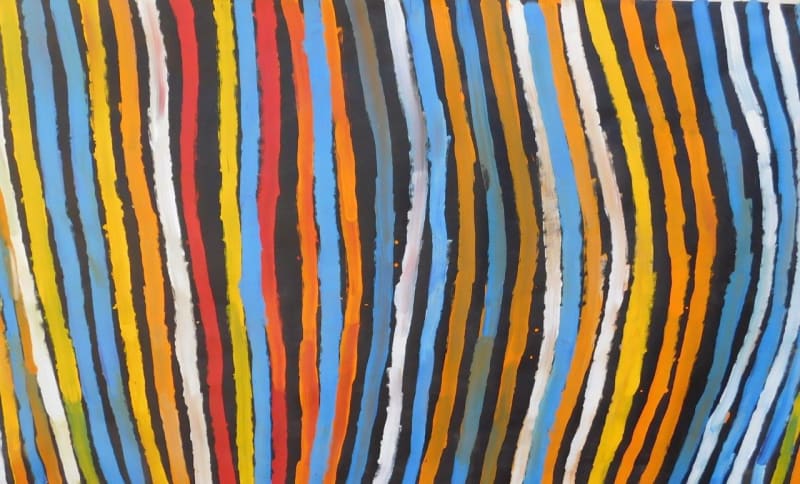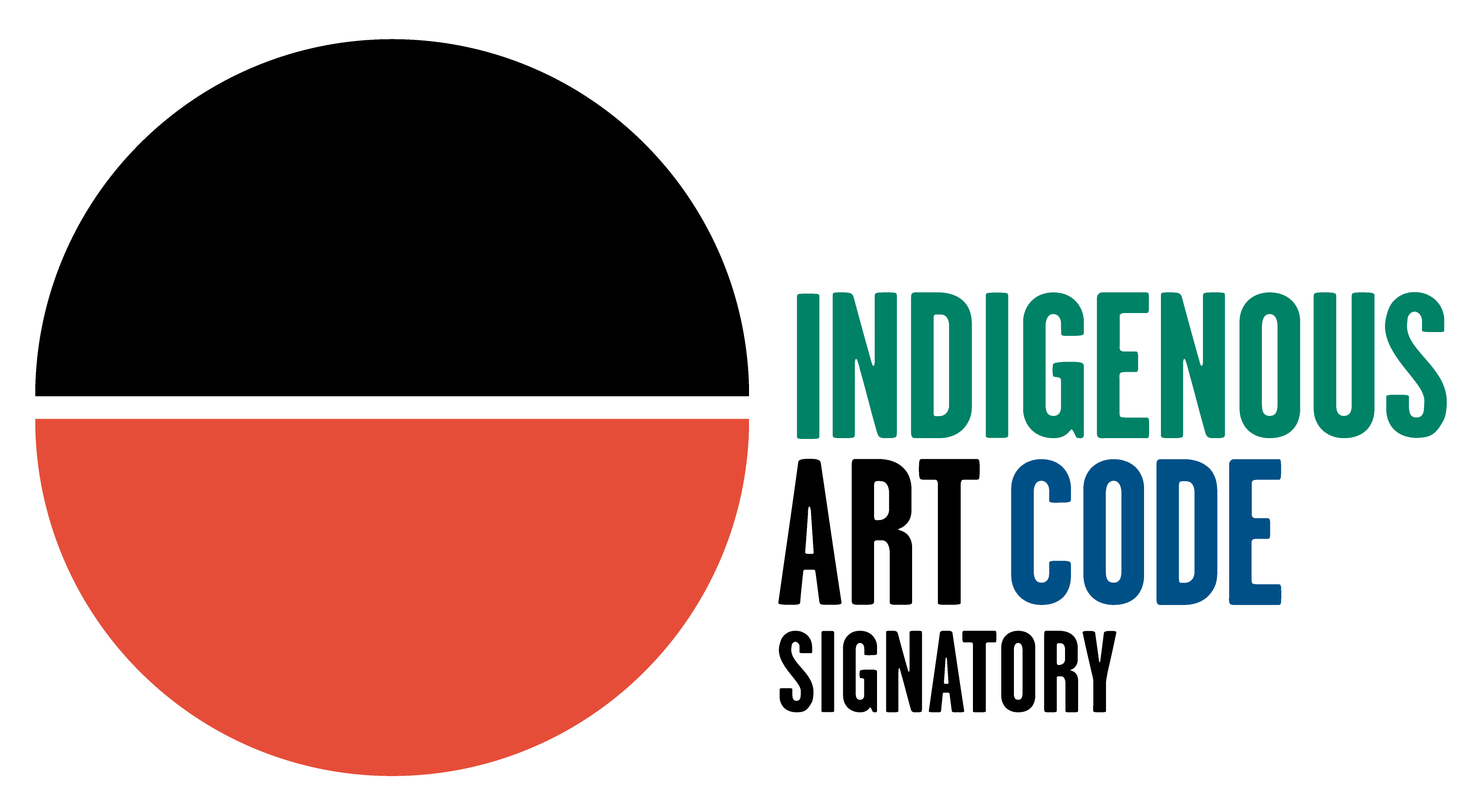Minnie Pwerle lived her entire life on her Utopia home lands some 300k north east of Alice Springs, yet within the last five years of her life rocketed to Australian art super stardom. It had been an extraordinary journey for this tribal Anmatyerre-Alyawarre woman who had, until several years before this, only visited Alice Springs once. Pwerle’s painting career also had some similarities with that of her predecessor , friend and Anmatyerre countrywoman, Emily Kame Kngwarreye. Like Kngwarreye, Pwerle had taken up painting in her 70s; and like Kngwarreye her output quickly became both highly prolific, and notable for its wild colouration and free, gestural imagery. But the two women’s traditional stories were of different regions, so while their paintings shared a similarity of style they reflected this difference. Pwerle had witnessed the extraordinary rise to artistic supremacy of Kngwarreye. Later she watched as other younger women from the Utopia area – Gloria and Kathleen Petyarre, Angelina Pwerle, Abie Loy and her own daughter Barbara Weir – became highly prized artists.
Then in 2000 at close to 80 years of age Minnie Pwerle started painting. Melbourne’s Flinders Lane gallery director Sonia Heitlinger gave her her first solo exhibition in 2000. Heitlinger believed thatit was Pwerle’s `freedom of expression, inventiveness and sometimes outrageous and courageous palette’ that made her work unique. In 2003 Brisbane’s Fireworks Gallery Michael Eather showed the paintings of Kngwarreye and Pwerle alongside that of Sydney abstractionist Tony Tuckson, describing them as sharing similar qualities of `reverence, abandon, reliance on gesture, raw expression and intuition’.
Soon the market couldn’t get enough of Pwerle’s vibrantly powerful works. A prodigious and quick painter Pwerle was also an extremely hard worker who was up at dawn, painting solidly most days. She also remained formidably fit often outrunning women years younger on the regular hunts for food in the bush. Pwerle had seven children. The father of her first daughter, Barbara Weir, who she gave birth to as teenager was station owner Jack Weir. She had six other children with her late Aboriginal husband `Motorcar’ Jim Ngala. She has often been erroneously catalogued and listed as Minnie `Motorcar’Pwerle or `Minnie Motorcar’ due to this. From 2005, Pwerle’s sisters, Mollie, Galya and Emily all in their 70s and 80s, also started painting - first together in collaborative works.
Her work is represented in leading public collections including those of the Art Gallery of New South Wales, the National Gallery of Victoria, the Queensland Art Gallery, La Trobe University and in numerous significant private collections in Australia and internationally.


